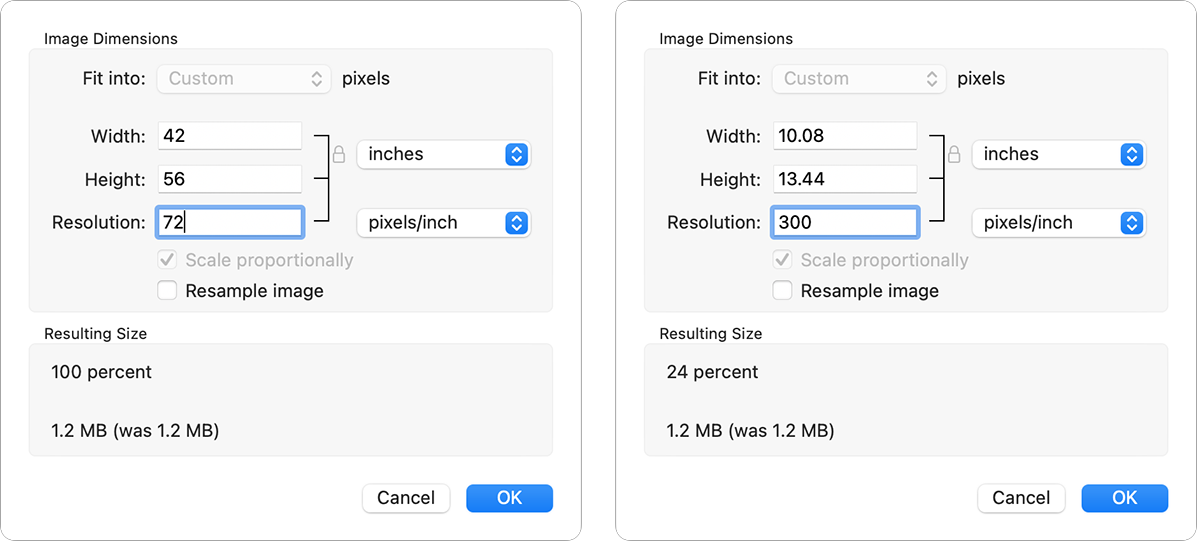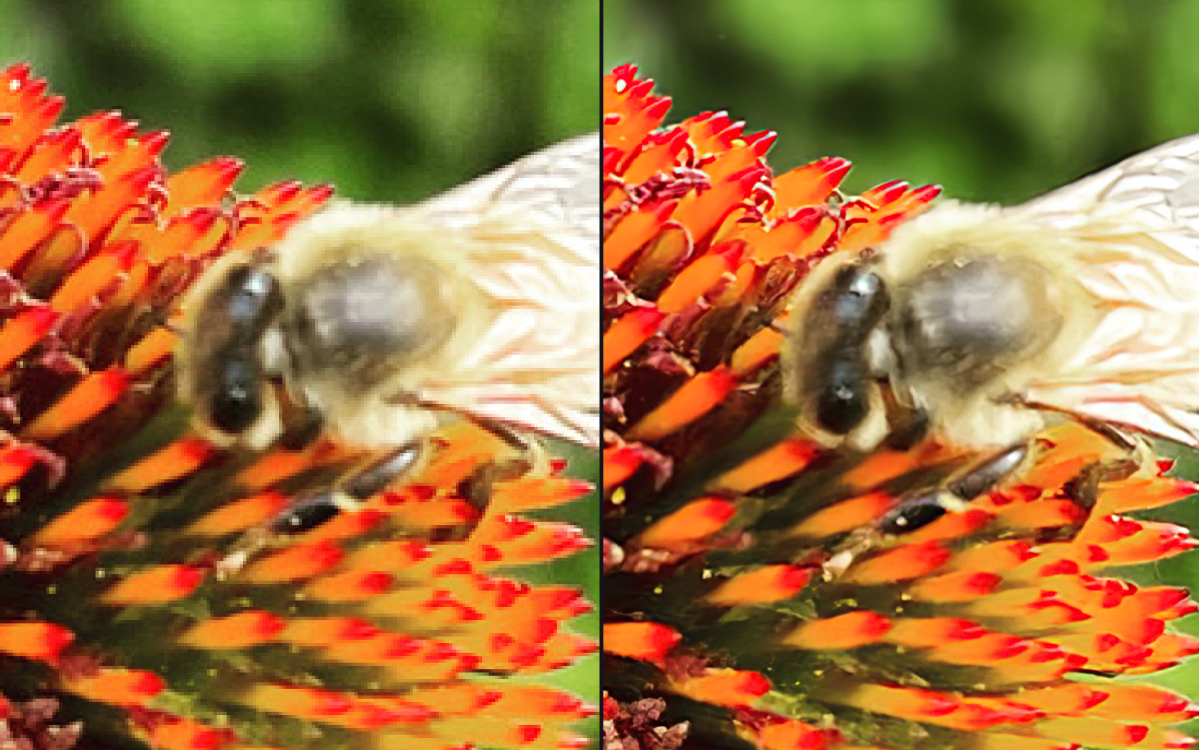How to upscale an impression or increase its resolution
![]() [ad_1]
[ad_1]
A picture you want to upload or print for some purpose could be considered as well “low resolution” to fulfill the needs of a web site, printing, or on-line image support. What alternatives do you have? You can transform an image’s resolution to clear up the dilemma.
There are two factors of a digital impression that are typically explained as “resolution”:
- The proportions of the picture in pixels, such as 3,024 by 4,032 for a modern day Apple iphone picture. Each and every pixel represents details captured, a sample of the hue and light-weight depth that handed via a lens onto a camera sensor ingredient.
- The pixel density, or dots or pixels for each inch (dpi, ppi), which maps pixels towards a favored screen sizing. (You can also map for every centimeter, of training course.) Most visuals are captured at 72 ppi, which would make an Apple iphone picture with the previously mentioned dimensions 42 by 56 inches (107 by 142 cm) if printed or shown at 72 ppi.
In numerous instances, the correct sum of data is in the picture and you don’t require to modify that. Instead, you need to have to modify the scale so that it maps in a way a site, printer driver, or provider accepts it. For occasion, printer software could possibly recommend 300 ppi from an input picture to create a 6-colour or 8-shade 1,200 dpi ink-jet print. (Simply because display pixels characterize thousands and thousands or even billions of colours, and because printer dots can only reproduce a couple of colors—as few as black moreover cyan, magenta, and yellow on an inexpensive ink jet—higher printer-dot density is demanded to simulate the colour of the original.)
You can alter the density in the developed-in Preview application in macOS:
- Start Preview.
- Open up your graphic.
- Choose File > Duplicate or keep down Possibility and choose File > Save As to work on a copy of the image.
- Choose Resources > Change Dimension.
- Uncheck “Resample Image,” which alterations the info of the file.
- Enter the new Resolution figure, such as 300 ppi.
- With inches (or cm or mm) chosen for the popup menu in Width and Peak, you can preview the revised device proportions after you enter the new resolution figure. Click on Okay.
- Help save the impression.

If you need to have extra graphic details than is present in a file, typically simply because you cropped an image, you can resize in Preview. The outcomes will generally appear blurry when zoomed in at 100% due to the fact Preview can’t add new info exactly where it doesn’t exist. It can only fill in new pixels that ordinary adjoining kinds.
To “upscale” an image, adhere to measures 1 to 4 above, and then:
- Make positive Resample graphic is checked.
- Both enter a new dimension in units (inches, cm, or mm) or a new pixel width or top. (With “Scale proportionally” checked, Preview immediately resizes the other dimension in proportion to the image ratio, avoiding you possessing to estimate that).
- Click Okay.
- Save the graphic.
In move 2 previously mentioned, you might change both equally resolution and device dimensions if you know the output size and required resolution. For instance, improve Resolution to 300 and Width to 12 inches for a 12-inch-large print, and Preview calculates that it will need to upscale the impression by 119 percent.
Bigger-finish photo-enhancing computer software consists of much more subtle upscaling routines. Adobe Photoshop delivers quite a few through a popup menu that lets you decide and preview based mostly on the variety of image you are resizing. You might opt for just one algorithm for a monitor capture or higher-contrast impression and a further for a properly-lit outdoor shot.
You can also convert to computer software that incorporates device-finding out artificial-intelligence scaling that can intelligently consider designs in photographs to smooth and fill in enlargements to look extra sensible. You can’t add facts from a void, but algorithms can take away tough edges and pixelization although smoothing out tones, specifically on faces.
AI possibilities involve capabilities observed in newer versions of Adobe Lightroom (Improve) and Photoshop (Neural Filters) both apps are part of an Adobe Innovative Cloud subscription. You can also look to standalone apps or Photoshop plug-ins, like ON1 Resize AI ($79.99) and Topaz Gigapixel AI ($99.99).

This Mac 911 posting is in reaction to a concern submitted by G3 Box News reader Linda.
Question Mac 911
We’ve compiled a list of the queries we get requested most frequently, along with responses and back links to columns: read our tremendous FAQ to see if your problem is protected. If not, we’re usually wanting for new issues to remedy! Email yours to mac911@macworld.com, which includes monitor captures as correct and irrespective of whether you want your entire name utilised. Not every question will be answered, we really don't reply to e-mail, and we are unable to present direct troubleshooting advice.
[ad_2] https://g3box.org/news/tech/how-to-upscale-an-impression-or-increase-its-resolution/?feed_id=1410&_unique_id=62c2bc66648a9


0 comments:
Post a Comment